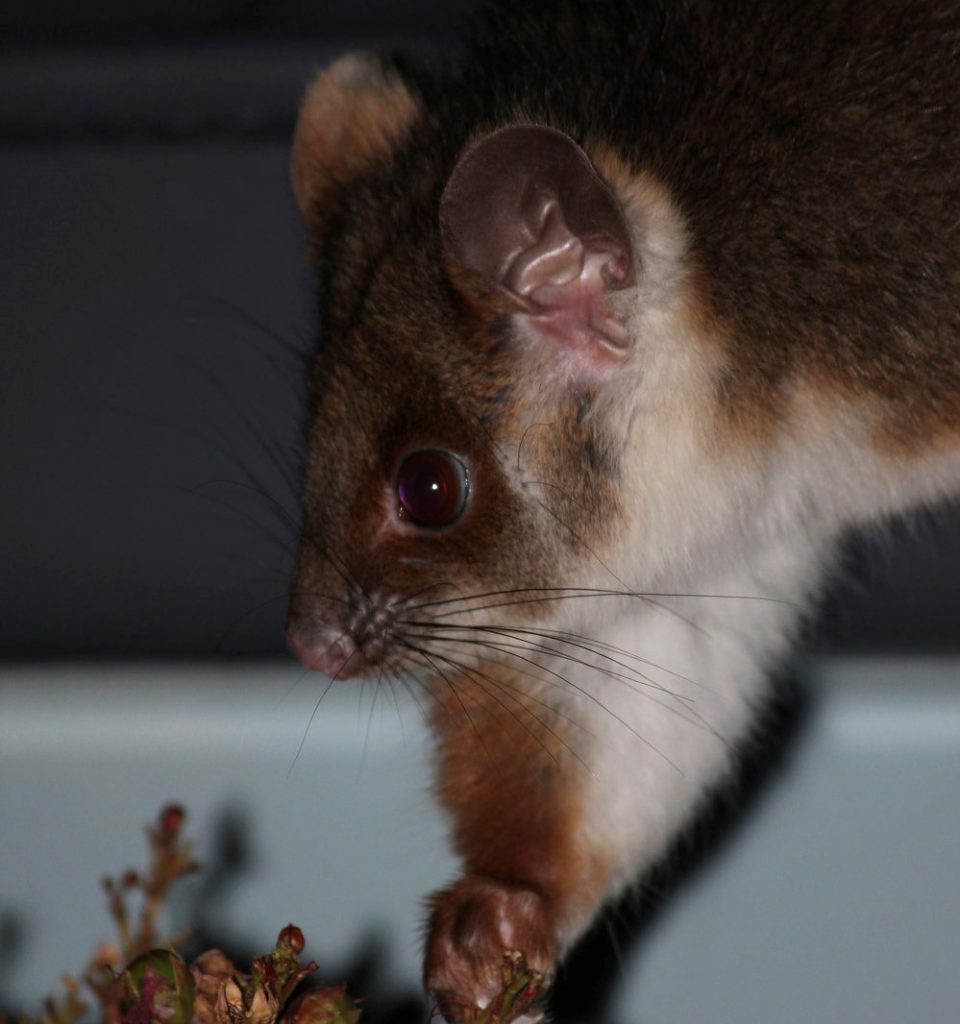These days there’s a lot of buzz surrounding pollinators. When most of us think of them, our minds quickly turn to bees and butterflies. However, in Australia we have a diverse range of warm-blooded pollinators working through the night to keep our forests growing strong, and many of them call our city home.
Ancient Australia
Australia is a global hot spot for mammal pollinators. To better understand the close relationships between these warm-blooded creatures and their floral friends, we must turn our minds back millions of years to prehistoric Australia when flowers first appeared on the continent. For a very long time before the present day, Australia sat much farther south and at one point even stood where Antarctica now rests. At that time though, the globe was much warmer and plants could survive on this cool, southern continent known as Gondwana. Although polar forests flourished, temperatures still remained low, especially in winter when the forests often froze over. This provided a real challenge for plants eager to be pollinated.

Possums

Possums are perhaps the most commonly encountered native mammals in the greater Melbourne region. Most folks view them with a strange combination of weak interest and mild irritation because of their all too common habit of taking up residency in our roofs. Possums, though, are important pollinators of many native trees and shrubs throughout Australia. We are most familiar with the common brushtail possum (Trichosurus vulpecula) and common ringtail possum (Pseudocheirus peregrinus) that are regular visitors to the flowers of gum trees. But while these two species supplement their diets of leaves with whole flowers, nectar and pollen, the real heavy lifters among the pollinating possums are the gliders.
In the greater Melbourne region the most common of these is the sugar glider (Petaurus breviceps), which incorporates a huge amount of pollen and nectar into its diet along with insects and tree sap. These little possums live in family groups, reside in tree hollows, and are important pollinators of Eucalyptus trees. Melbourne is also home to the world’s smallest glider, the feathertail glider (Acrobates pygmaeus), which weighs about 14 grams and is small enough to fit in the palm of your hand. While these little possums are far from common, they can still be found in the forests near Frankston and in Melbourne’s north-east. Like the sugar glider, they are also voracious pollen feeders but supplement their diet with insects.
Bats
Bats are another group of mammal pollinators often viewed with some antipathy by the general public because of their noisiness and propensity towards raiding fruit trees. However, bats are much more important to Australia’s ecosystems than many people realise. It’s important to note that the majority of bats that call Melbourne home do not act as pollinators – these are the microbats and they are in fact carnivores or insectivores. The grey-headed flying fox (Pteropus poliocephalus) is Melbourne’s only bat pollinator and reaches sizes far greater than its small carnivorous relatives, with wingspans up to one metre. Grey-headed flying foxes feed on a range of different flowers throughout the year but particularly favour the Myrtaceae family which includes the eucalypts, honey myrtles and tea trees, as well as the Proteaceae which includes the banksias and grevilleas. Fruit bats are not only important pollinators, but also critical seed dispersers for many native plants as well.
Dasyurids
Perhaps the strangest mammal pollinators to call the Melbourne region home are the Dasyurids, a group which few people have even heard of let alone considered as pollinators. For those unfamiliar with the often complex world of mammal taxonomy, the Dasyuridae is a family of mammals that includes quolls, Tasmanian devils, the now extinct Tasmanian tiger, and a range of other small, carnivorous marsupials. Many small Dasyurids resemble rodents superficially, but all possess a pouch which sets them apart. The genus Antechinus is one of these rodent-like groups of marsupials and Melbourne is home to three species: the swamp antechinus (Antechinus minimus), dusky antechinus (Antechinus swainsonii) and agile antechinus (Antechinus agilis). In other parts of Australia, Antechinus species are known as excellent pollinators of Banksia sp. but it remains unclear what role our Melburnian species may play in the pollination of local flora.


So next time you see fruit bats glide overhead or hear a possum scurry across your roof, just remember the surprising task that these pollinators undertake. Although they may not be as glamorous or well-liked as native bees or butterflies, mammals are key pollinators of many of our native plants. It’s now our responsibility to halt their decline, as losing them could be catastrophic.
Banner image of a grey-headed flying fox eating flower nectar and is courtesy of Andrew Mercer [CC BY-SA 4.0], via Wikimedia Commons.


Leave a Reply